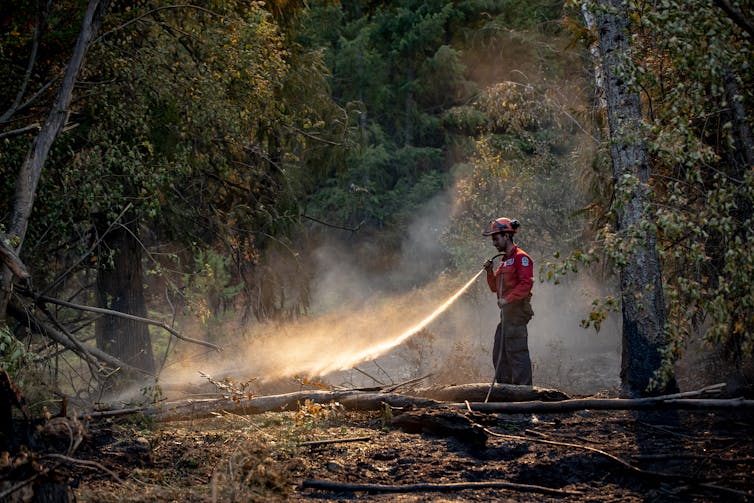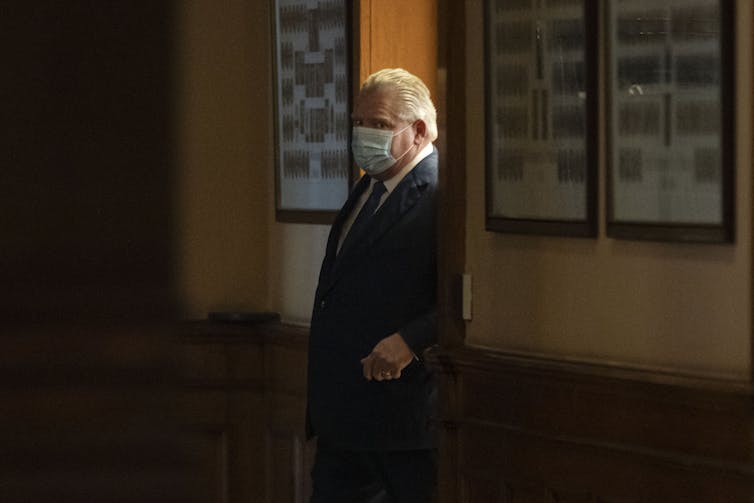The COVID-19 pandemic is different from the disasters Canadians are more familiar with. The public’s confusion partly stems from the fact that the pandemic doesn’t follow the usual pattern of news media coverage featuring stories about first responders dealing with the immediate harm and damage, and then moving on to the next story.
Instead we’ve had almost two years of public health and safety orders that have dramatically changed the way we work, travel and live. While requiring evacuation during a flood or wildfire is common sense, we’ve been dealing with emergency orders that vary across the country, come and go with each wave and have divided communities.
These emergency orders expose how disasters unfold and the status of the emergency management system in Canada. Some of the characters are familiar, like mayors and fire chiefs, while others are equally important even though they are seldom talked about. To understand the role of these emergency managers, we need to understand disasters.
Disasters are more about the aftermath
It’s easy to think of disasters simply as the events that cause them. A tornado, an earthquake or a plane crash might all come to mind as examples of disasters.
But on Dec. 17, 2021, there was an earthquake in British Columbia that was not a disaster because there was no major destruction or loss of life. This shows that there’s a threshold an impact must cross to be considered a disaster.
This threshold varies from place to place, changes over time and can impact different parts of our communities in different ways. This is obvious in Canada, where a few centimetres of snow can shut down Vancouver but barely matters in Saskatoon.
This threshold is really determined by the community’s ability to cope using its normal resources and methods.
In routine emergencies, we rely on our first responders working with partners in health and sometimes utility companies or others.
But in a disaster, these normal resources and relationships do not have the capability to meet the demand — such as when a mudslide closes a road so no fire engines can arrive — or they do not have the capacity, like when an entire town is on fire and there are simply not enough firefighters.

In these situations, emergency management provides strategies to extend our resources.
When these conditions occur, communities must take extraordinary measures. The federal government and every province have emergency management legislation that empowers them to take actions are not normally considered acceptable.
These laws set out who can declare a formal state of emergency and what special powers the government can apply to help tackle the crisis. Most Canadians are now familiar with these powers as governments have used some to deal with the pandemic.
Cracks have been exposed
Every province has an emergency management system, usually at the local level, designed to guide our responses. The pandemic is showing the cracks in these systems.
The public demands help when a disaster strikes. Politicians hear their demands and meet it with first responders and financial assistance. The public learns about these actions via the media, which can create a misplaced sense of satisfaction that silences requests to properly prepare for future disasters and to fund preparedness initiatives.
Behind the scenes, in fact, emergency management systems often perform poorly due to long-term underfunding. The underlying problem is that emergency management resources don’t match the importance of what they have to do in the event of a disaster. This shortfall only becomes apparent amid the disaster, when everything seems to be failing.
It’s difficult to determine exactly how much is spent on emergency management in Canada, or to compare it fairly to other countries, since the systems and budget items vary. The 2021 budget line for emergency management was about $273.8 million, or around $7 per Canadian. In the United States, the 2021 budget for the Federal Emergency Management Agency was approximately US$14.5 billion, ($18.6 billion in Canadian dollars) or nearly US$55 per American citizen.
The pandemic should lead to extensive changes in Canada’s emergency management system. Unfortunately, it’s more likely that public officials will pat themselves on the back, put on a brave face in response to any official inquiries or adverse media coverage and then allow emergency management to continue under-performing.

Accepting the status quo
Politicians will accept this status quo because it doesn’t cost anything. The media will move on and the public will be given a false sense of security. Then we will repeat the dance over and over as each new disaster devastates our unprepared communities.
The pandemic is exposing the symptoms of this neglect. While the media and first responders focus on the cause of the disaster — in this case, COVID-19, but it could be the next the earthquake or wildfire — the emergency management system should also deal with the social and economic consequences.
Read more: Insurance isn't enough: Governments need to do better on natural disaster resilience
These longer term, community-oriented issues require planning and resources just as much as the initial physical response does. However, the emergency management system is poorly funded and lacks consistent attention between disasters. Chronic underfunding has undermined confidence in emergency management so the public, media and political leadership distrust the system when it’s most needed.
This creates a leadership vacuum. During the pandemic, public health practitioners have been expected to step beyond their areas of expertise and make decisions that would be better supported by emergency management. Such support requires resources and organizational recognition of the role.
Correcting these shortfalls is urgent if Canadians are to rely on our emergency management system in a future of more severe events. However, the solutions will require political will … a commodity as rare as toilet paper in a pandemic.

